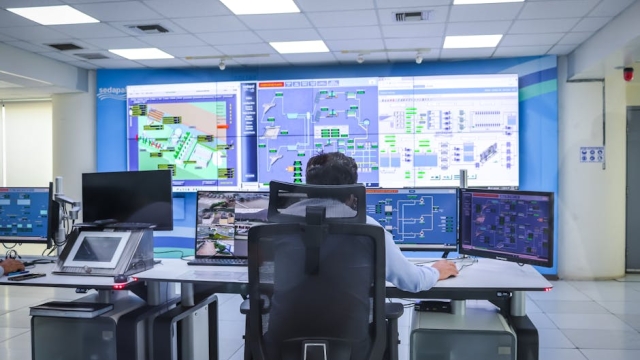
In an ever-evolving world where security is a paramount concern, understanding and implementing effective security camera procedures is essential for safeguarding homes and businesses. Proper installation and maintenance of security cameras not only enhance safety but also ensure that the system functions optimally. This article delves into the importance of these procedures, with a focus on Power over Ethernet (PoE) technology, best practices for installing Amcrest security cameras, and essential maintenance and troubleshooting tips.
Understanding PoE Technology for Security Cameras
Power over Ethernet (PoE) technology significantly simplifies the installation of security cameras. By allowing both power and data to be transmitted over a single Ethernet cable. PoE eliminates the need for separate power sources and complex wiring. This not only reduces installation time but also minimizes the potential for wiring errors.
The benefits of PoE extend beyond simplicity. It offers flexibility in camera placement, as the cameras can be installed in locations that are not easily accessible to power outlets. This is particularly useful for outdoor installations or areas where electrical access is limited. Additionally. PoE systems can be easily expanded, allowing users to add more cameras without significant infrastructure changes.
For those interested in exploring PoE options for their security camera systems, resources such as Amcrest’s offerings provide a range of products that cater to different security needs while leveraging the advantages of PoE technology.
Best Practices for Installing Amcrest Security Cameras
When it comes to installing Amcrest security cameras, following best practices is crucial for achieving optimal performance. Here are step-by-step guidelines to help you through the installation process:
1. Plan Your Camera Placement
Before installation, assess the area where you intend to place the cameras. Identify potential blind spots and determine the best angles for capturing footage. High-traffic areas, entry points, and outdoor spaces are typically essential locations. Ensure that the cameras are positioned to avoid obstructions and provide a clear view.
2. Gather Necessary Tools and Equipment
To make the installation process smoother, gather all necessary tools and equipment beforehand. This may include a drill, screws, anchors, and of course, the Ethernet cables for PoE connectivity. Having everything on hand will help streamline the process.
3. Mount the Cameras Securely
Using the provided mounting hardware, secure the cameras in your chosen locations. Ensure that the cameras are level and firmly attached to avoid any movement. If installing outdoors, consider using weatherproof enclosures to protect the cameras from environmental factors.
4. Connect the Cameras
For PoE cameras, connect each camera to your network switch or PoE injector using the Ethernet cables. This connection will provide both power and data transfer. Make sure to test each connection to confirm that the cameras are powered and transmitting data correctly.
Routine Maintenance and Troubleshooting for Security Cameras
After installation, establishing a routine maintenance schedule is vital for ensuring the longevity and effectiveness of your security camera system. Here are essential maintenance tips and common troubleshooting steps:
1. Regularly Clean the Cameras
Over time, dust, dirt, and weather elements can obstruct the camera lens. Regular cleaning will help maintain clear visibility. Use a soft cloth and a gentle cleaning solution to wipe the lenses and housing. Avoid using harsh chemicals that could damage the camera.
2. Check Connections Periodically
Inspect the Ethernet connections and power sources regularly to ensure everything is functioning correctly. Loose connections can lead to disruptions in power or data transfer, affecting camera performance.
3. Update Firmware as Needed
While avoiding references to specific updates, it is important to be aware that keeping your camera firmware current can help enhance security features and overall performance. Check the manufacturer’s website for guidance on how to perform updates when necessary.
4. Troubleshooting Common Issues
If you encounter issues such as the camera not recording or poor image quality, start by checking the power and data connections. Restarting the camera can also resolve temporary glitches. If problems persist, consult the user manual or the manufacturer’s support resources for further assistance.
By understanding and implementing effective security camera procedures, including harnessing the benefits of PoE technology and following best practices for installation and maintenance, you can ensure that your security camera system remains a reliable asset in safeguarding your property. Taking these steps will not only enhance security but also provide peace of mind for years to come.
